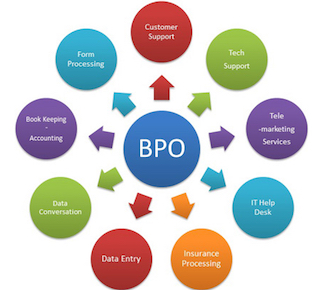 Too many companies explain away their refusal to explore BPO as a “need to get their IT in order before we can consider this”. BPO actually is creating a great opportunity to transform IT in concurrence with the business process – with the bill footed by cost arbitrage, as opposed to the shareholder.
Too many companies explain away their refusal to explore BPO as a “need to get their IT in order before we can consider this”. BPO actually is creating a great opportunity to transform IT in concurrence with the business process – with the bill footed by cost arbitrage, as opposed to the shareholder.
The earlier BPO deals were largely focused on transitioning the people and processes to work in an outsourced end-state, and the IT people needed to support that outsourced function were brought into the equation late in the game to get the existing systems to support the outsourced end-state. This often caused issues with data security, systems and application integration, and often resulted in the outsourcing buyer incurring far greater costs to re-configure their IT backbone to support the BPO strategy than they had originally budgeted.
Both business process and IT change should be driven TOGETHER – and BPO is a change agent that must also incorporate this philosophy – and several of today’s recent outsourcing buyers are leveraging BPO to transform their IT backbone at the same time. Gianni Giacomelli, who leads global marketing strategy for SAP’s BPO group, lives and breathes this issue on a daily basis and works tirelessly to create programs that support the BPO providers with deploying technology and resolving related problems – be them understanding how to better automate processes, finding shortcuts for implementation, sketching what is possible with technology innovation, or simply identifying solutions to operate the technology platform more cheaply. Take it away Gianni…
Two things explain much of the BPO industry’s uncertainties: one is about breaking bad habits, and the other about eliminating “blind spots”. The bad habits are the ones of the RFP cycle – where all the parties have traditionally played “sell-and-buy-a-product” instead of looking at operational synergies. The blind spot is the scarce use of joint process and technology redesign in unlocking those synergies. Ironing these wrinkles out will require substantial investments and change from all sides – but the stakes are high enough to give it a shot. I will argue that requiring a better alignment of customer, BPO provider and software vendor is a good way to change the game for the better.
While many early generation BPO deals showed patterns typical of system integration and process reengineering – both disciplines matured in the 90s – success in BPO is more than just process redesign and technology. It is about operational excellence and as such it must leverage both the operational and transformational skills of the provider – and should be driven by the respective stakeholders in both camps (that is, by the COO as well as the CIO). Some BPO providers, often pushed by end-clients and advisors, insufficiently supported by software vendors, and challenged by internal resource-allocation dynamics, have failed to realize this point in the past.
Structurally, many BPO providers were either born very good “operators” and excel at operating a given setup, or very good “implementers” who are good at designing and implementing innovation – but rarely both at the same time. The result in quite a few cases was a failure to leverage processes and technology solutions to fully harness the key drivers of BPO value: economies of scale, process optimization, and low cost labor. This explains a number of economically unsustainable deals that left customers and providers dissatisfied. Successful BPO providers make the most out of their technology investments by ensuring that these investments serve their service delivery needs. They integrate process and technology design with operational requirements, thereby creating replicable solutions that enable true scale leverage.

Gianni Giacomelli, SAP
The best service providers also seek the systematic and long-term involvement and intimate support of the software vendor they choose for their process/technology platforms to assist them in their quest for ongoing evolution and improvement. Catering for the providers’ needs is not a job a software vendor is typically structured to do – and requires substantial investment on his part, too. Customers looking for a sustainable BPO platform are therefore best advised to systematically verify the solidity of the service provider’ software vendor relationship backing it up, for each of the crucial parts of the service delivery they require.
It is dangerous to unduly restrict the service provider’s freedom in leveraging and fully harnessing the effectiveness of economies of scale and process optimization (for a more thorough discussion, see the article here). However, it is absolutely critical that the customer (complemented by expert advisors) “kicks the technology tires” of the provider through the RFP process. In the end, the customer and its advisors should check if the technology deployment the provider proposes is indeed going to enable the economies of scale and process optimization required to generate sustainable results. It is essential that the technology vendor heavily supports the BPO provider.
Gianni Giacomelli (pictured) is director of global strategy and marketing for SAP’s BPO business unit.
Posted in : Business Process Outsourcing (BPO), Outsourcing Heros







[…] it’s great to get some time with you today. I think we last featured you on HFS (see post) about maybe seven or eight years ago right at the beginning of the blog. So it’s nice to […]